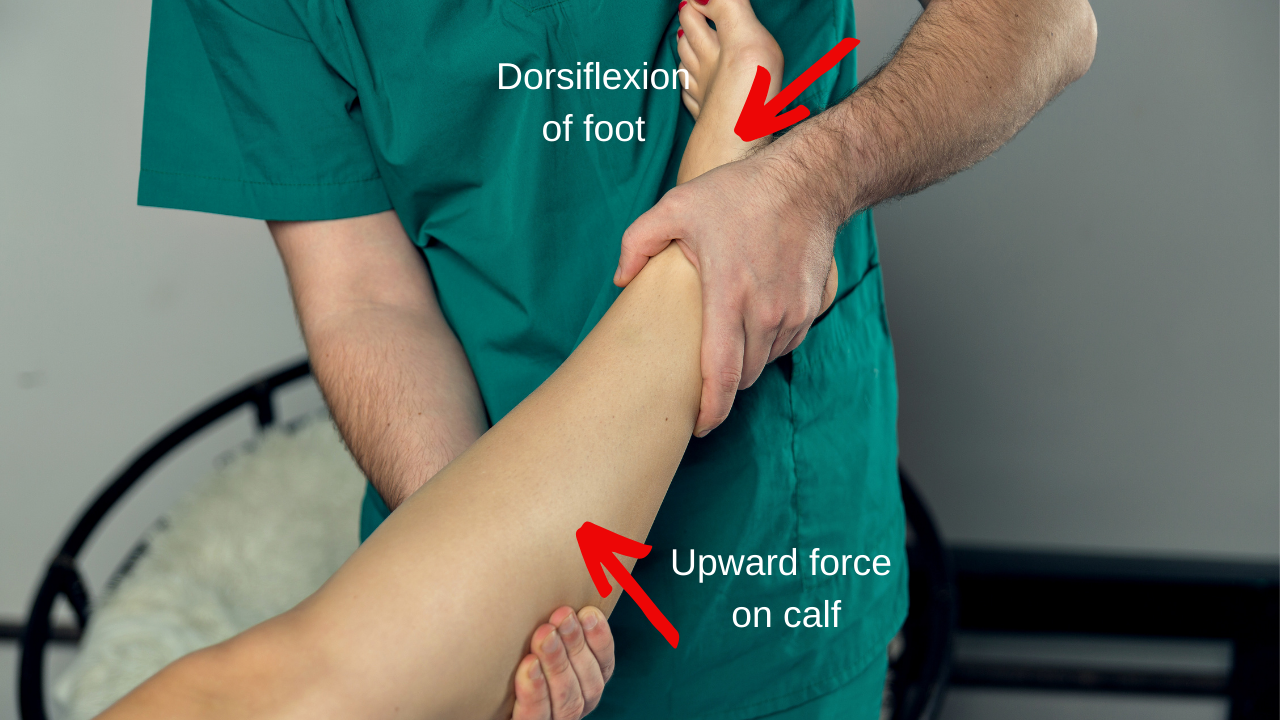Today, we’re diving into a super important health topic that you need to know about – Deep Vein Thrombosis, or DVT.
Whether you’ve heard the term before or not, this article is going to break down everything from what DVT is, to why it happens, how to check for a blood clot in your leg and even how to prevent it, all in a way that’s easy to understand.
What Exactly is DVT?

DVT stands for Deep Vein Thrombosis, which basically means a blood clot forms in one of the deep veins in your body. These veins aren’t the ones you can see under your skin – they’re the larger ones deep inside your legs.
Most of the time, DVT occurs in the legs, but it can also happen in other parts of the body, like the pelvis or arms.
Imagine your veins as tubes that carry blood back to your heart. Blood flows through your veins smoothly, but when a clot forms, it blocks the flow of blood, like a traffic jam. Blood gets stuck behind the clot, causing swelling and pain.
This can be dangerous because if that clot breaks free, it can travel through your bloodstream to your lungs, causing something called a pulmonary embolism (PE). This is life-threatening, which is why DVT is such a big deal.
Symptoms of DVT
Okay, so what are the signs that you might have DVT?
Here’s the tricky part – not everyone with DVT has symptoms. In fact, some people don’t realize they have it until something more serious, like a pulmonary embolism, happens. However, when symptoms do appear, they often look like this:
- Swelling – This usually happens in just one leg. It could be your calf, your thigh, or even your whole leg that feels puffy and bigger than normal.
- Pain – The pain often feels like a cramp or soreness in the affected leg, usually in the calf. It might hurt more when you stand or walk.
- Warmth and Redness – The skin around the swollen area may feel warm to the touch and look red or discolored.
- Tenderness – When you press on the area that’s swollen or painful, it might feel tender, like a bruise, even though you didn’t injure yourself.

leg pain
Now, it’s important to note that these symptoms could be mistaken for something else, like a muscle strain or just general soreness.
But if you notice these symptoms, especially if they appear suddenly after sitting for a long time or after surgery, it’s important to get checked out by a doctor right away.
Why Do People Get DVT?
So, why does DVT happen?
There are a few different reasons, and some people are more at risk than others.
Let’s break it down:
- Prolonged Sitting or Inactivity
Ever heard of “economy class syndrome”?
It’s the nickname for what happens to some people when they sit still for a long time, like on a long flight or road trip. When you don’t move your legs for a while, your blood flow slows down, and that’s when a clot can form. It’s not just flights, though – sitting at a desk for hours without moving around can also put you at risk.

- Surgery or Injury
Certain surgeries, especially ones on your legs or hips, can raise your risk of DVT.
This is because surgery can damage your blood vessels, and afterward, you’re often less mobile while you recover. Any injury that reduces movement, like a broken bone, can have a similar effect.
- Age

The older you get, the higher your risk of developing DVT.
This is especially true for people over 60, but it’s not something that only affects older adults. Young people can get DVT too, especially if they have other risk factors.
- Genetics
Some people are more likely to develop blood clots because of their family history. If your parents or grandparents had DVT, you might have a higher risk of getting it too.
- Obesity
Carrying extra weight puts more pressure on your veins, especially in your lower body. This can make it harder for blood to flow normally, increasing the risk of clot formation.
- Smoking
Smoking damages your blood vessels and makes it easier for blood to clot. It’s another reason why smoking is so dangerous for your health.

- Medications and Hormones
Certain medications can make your blood more likely to clot. Birth control pills, hormone replacement therapy, and even some cancer treatments can increase your risk of DVT.
- Pregnancy
Pregnant women are at higher risk of DVT because the growing baby puts pressure on the veins in the pelvis and legs. This pressure can slow down blood flow, leading to clots. The risk continues during the period after pregnancy. If you are a mom be aware of this.
How to Check for a Blood Clot in Your Leg
While only your health care provider can confirm DVT, there are some signs and symptoms you can check for at home.
Here are 4 Common Symptoms to Look For:
1.Swelling
Look at your legs. Go ahead a look at them
If one leg is noticeably more swollen than the other, especially in the calf or thigh, that could be a sign of a clot.
The swelling might happen suddenly or gradually.
2.Pain or Tenderness
Pain from DVT can feel like a cramp or soreness. If you press on the area which appears swollen and it may feel tender, even though there’s no visible injury.
3.Warmth
The skin over the clot may feel warmer than the rest of your leg. This is because blood gets trapped behind the clot, causing inflammation.
4.Redness or Discoloration
The affected area might turn red or have a bluish tint. This is another common sign of DVT and something you should be aware of.
The Homan’s Test:
There’s also something called the Homan’s test that doctors sometimes use to check for DVT.

It’s not 100% accurate but can give a clue if there’s something wrong.
Here’s how it works:
- Sit down and stretch out your legs.
- Have someone gently press on the back of your knee while you pull your toes toward your body, flexing your foot.
- If this motion causes sharp pain in your calf, it could be a sign of DVT.
Now, keep in mind that not everyone with DVT will have a positive Homan’s test, and some people without DVT can also feel pain with this test. So while it’s a quick check, it’s always best to follow up with a doctor if you suspect DVT.
When to See a health care provider:
If you notice any of these signs, especially after sitting for a long time, having surgery, or if you have a family history of clots, you should seek medical advice right away. DVT is dangerous because if the clot breaks off, it can travel to your lungs and cause a pulmonary embolism, which is life-threatening.
Diagnosis of DVT
So how do doctors confirm whether you have a blood clot?
Here are some of the most common ways DVT is diagnosed:
Doppler Ultrasound
This is the most common and non-invasive way to diagnose DVT.
It uses sound waves to create an image of your veins, helping doctors see if there’s a clot blocking the blood flow. It’s painless, quick, and often the first test doctor’s order.
D-dimer Test

The D-dimer test is a blood test that looks for a substance in your blood that’s produced when a blood clot breaks down. High levels of D-dimer can suggest that a clot is present. However, high levels can also be caused by other things. Therefore, your health care provider should be looking at other testing your physical examination and history to help with a diagnosis.
Venography
In some cases, doctors might use a more invasive test called venography. This involves injecting a dye into your veins, which shows up on X-rays and helps pinpoint exactly where the clot is located.
This test is used less frequently nowadays but can be helpful in complicated cases.
Treatment of DVT
So, what happens if you’re diagnosed with DVT?
Don’t panic – there are several ways to treat it.
Here are the most common treatments:
1.Blood Thinners (Anticoagulants)

The main treatment for DVT is blood thinners, also known as anticoagulants.
These medications don’t break up the clot, but they prevent it from getting bigger and stop new clots from forming. Over time, your body will naturally dissolve the clot on its own.
There are different types of blood thinners, including:
- Warfarin – An older blood thinner that requires regular blood tests.
- Heparin – Often given through an injection at the hospital.
- Newer Anticoagulants – Medications like rivaroxaban or apixaban, which don’t require as much monitoring. The brand names are Xarelto and Eliquis
Depending on your situation, you might need to take blood thinners for a few months or longer, sometimes even for life.
If you are want me to make a video looking at these medications such as Xarelto or Eliquis in more detail leave a comment below.
2.Compression Stockings
These special socks are designed to help keep blood flowing in your legs. They’re often recommended for people recovering from DVT because they reduce swelling and prevent blood from pooling in your veins. You might wear them for several months or more.
3.Thrombolytics
In more severe cases, doctors may use thrombolytics, which are medications that dissolve blood clots. This treatment is more aggressive and usually reserved for life-threatening situations, such as when a clot is very large or there’s a risk of a pulmonary embolism.
4.Surgery

In rare cases, surgery may be required to remove a blood clot. This is usually only done if other treatments haven’t worked, or if the clot is causing serious issues, like cutting off blood flow to a leg.
And now you know how to check for the symptoms at home, but remember, it’s always important to see a doctor or your health care provider for a proper diagnosis.
ICheck YT video here.Have a good day and Think your Health.
Sources:






